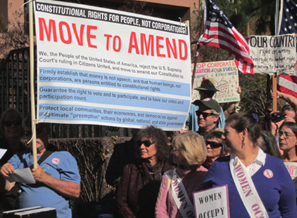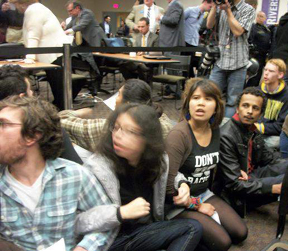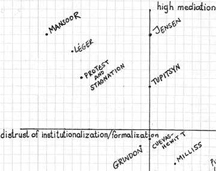| About Us | Contact Us | Calendar | Publish | RSS |
|---|
|
Features • latest news • best of news • syndication • commentary Feature Categories IMC Network:
Original Citieswww.indymedia.org africa: ambazonia canarias estrecho / madiaq kenya nigeria south africa canada: hamilton london, ontario maritimes montreal ontario ottawa quebec thunder bay vancouver victoria windsor winnipeg east asia: burma jakarta japan korea manila qc europe: abruzzo alacant andorra antwerpen armenia athens austria barcelona belarus belgium belgrade bristol brussels bulgaria calabria croatia cyprus emilia-romagna estrecho / madiaq euskal herria galiza germany grenoble hungary ireland istanbul italy la plana liege liguria lille linksunten lombardia london madrid malta marseille nantes napoli netherlands nice northern england norway oost-vlaanderen paris/Île-de-france patras piemonte poland portugal roma romania russia saint-petersburg scotland sverige switzerland thessaloniki torun toscana toulouse ukraine united kingdom valencia latin america: argentina bolivia chiapas chile chile sur cmi brasil colombia ecuador mexico peru puerto rico qollasuyu rosario santiago tijuana uruguay valparaiso venezuela venezuela oceania: adelaide aotearoa brisbane burma darwin jakarta manila melbourne perth qc sydney south asia: india mumbai united states: arizona arkansas asheville atlanta austin baltimore big muddy binghamton boston buffalo charlottesville chicago cleveland colorado columbus dc hawaii houston hudson mohawk kansas city la madison maine miami michigan milwaukee minneapolis/st. paul new hampshire new jersey new mexico new orleans north carolina north texas nyc oklahoma philadelphia pittsburgh portland richmond rochester rogue valley saint louis san diego san francisco san francisco bay area santa barbara santa cruz, ca sarasota seattle tampa bay tennessee urbana-champaign vermont western mass worcester west asia: armenia beirut israel palestine process: fbi/legal updates mailing lists process & imc docs tech volunteer projects: print radio satellite tv video regions: oceania united states topics: biotechSurviving Citieswww.indymedia.org africa: canada: quebec east asia: japan europe: athens barcelona belgium bristol brussels cyprus germany grenoble ireland istanbul lille linksunten nantes netherlands norway portugal united kingdom latin america: argentina cmi brasil rosario oceania: aotearoa united states: austin big muddy binghamton boston chicago columbus la michigan nyc portland rochester saint louis san diego san francisco bay area santa cruz, ca tennessee urbana-champaign worcester west asia: palestine process: fbi/legal updates process & imc docs projects: radio satellite tv |
production:
previous page 38 next page |
single feature archives |
weekly archives
Spring Festival, also known as Lunar New Year or Chinese New Year, is beyond a massive holiday; it impacts everyone in China. Nearly a billion people will travel back to home during the so-called 40-day Chunyun (春运) travel period, the world's largest human migration movement.This year's Chunyun will be expected to make up around 3.16 billion passenger trips means around a round-trip for every people in China (population approx.13.3 billion).
While middle classes can afford to take airplanes for the holiday, for average Chinese migrant workers and students, the less expensive railroad trip could be their only chance in a few years to return their home for the holidays. Train tickets are always very difficult to buy during the holiday seasons, and the trip could be very long. Some people could take up-to10-days trip from far nothen China to far southern China to meet their family. Holidays also mean the need to bring year-long savings from work to families; however, not everyone is so lucky. Many workers also need to fight for their back-wages as well, right before the new year many company bosses also could cheating their worker's wages, they need to fight to get their money back. The author also comments on the impact of international politics in China, including the steady rise of China's right wing pro-US/anti-communist neo-con/neo-liberal forces. From the newswire: Journey to My Home--Happy Spring Festival (AKA Chinese New Year)! by Lee Siu Hin
SAN DIEGO - January 20 , 2012 - When 100 protesters from Occupy San Diego, Activist San Diego, Common Cause, the League of Women Voters and a wide variety of organizations arrived in the morning to hold a rally outside the Federal Building in downtown San Diego to protest the U.S. Supreme Court’s two-year-old Citizens United decision, they were in for a rude awakening. A phalanx of agents from the U.S. Department of Homeland Security had parked four trucks outside the building — three ominously labeled “Homeland Security Federal Protective Service” and one, unmarked, topped with a satellite dish — and stationed themselves outside the building to ensure that the rally could not take place there. Instead the Homeland Security agents unilaterally moved the rally to an alcove by the side of the building two blocks away, in a far less visible location.
The rally went on anyway, with featured speakers Marjorie Cohn, professor at Thomas Jefferson College of Law and former head of the National Lawyers’ Guild,; Lori Saldaña, former California State Assembly member and current candidate for Congress against Republican incumbent Brian Bilbray; and Tara Ludwik, a 37-year-old single mother from Point Loma who described herself as “amazingly moderate” politically until last September, when she joined Occupy San Diego. Full Story: San Diegans Rally Against Citizens United Decision by Mark Gabrish Conlan
SAN DIEGO - January 20 , 2012 - When 100 protesters from Occupy San Diego, Activist San Diego, Common Cause, the League of Women Voters and a wide variety of organizations arrived in the morning to hold a rally outside the Federal Building in downtown San Diego to protest the U.S. Supreme Court's two-year-old Citizens United decision, they were in for a rude awakening. A phalanx of agents from the U.S. Department of Homeland Security had parked four trucks outside the building three ominously labeled Homeland Security Federal Protective Service and one, unmarked, topped with a satellite dish and stationed themselves outside the building to ensure that the rally could not take place there. Instead the Homeland Security agents unilaterally moved the rally to an alcove by the side of the building two blocks away, in a far less visible location.
The rally went on anyway, with featured speakers Marjorie Cohn, professor at Thomas Jefferson College of Law and former head of the National Lawyers Guild,; Lori Salda, former California State Assembly member and current candidate for Congress against Republican incumbent Brian Bilbray; and Tara Ludwik, a 37-year-old single mother from Point Loma who described herself as amazingly moderate politically until last September, when she joined Occupy San Diego. Full Story: San Diegans Rally Against Citizens United Decision by Mark Gabrish Conlan RELATED: Occupy Redlands Protests Citizens United Decision by Rockero RIVERSIDE (CA) January 19, 2012 - Thousands of students, workers, and community members gathered to participate in the governance of the UC system. When their participation was limited and ultimately shut off, they took direct action to ensure their voices were heard. For this, they were confronted by police from numerous agencies. Police violence broke out, and three arrests were made
Preparations for the event have been going on for months, and have included on-campus general assemblies and discussions of occupation. The camp began Tuesday night and immediately drew support from students and campers from Occupy Riverside and Occupy LA. By Wednesday, a food table was set up, as was an outreach table and a people's library. Students and faculty held many teach-ins and teach-outs to raise the consciousness of students. But the action really began Thursday morning, when groups of students and unions members spoke to the regents during the public comment section of the meeting. Full Story: UCR Occupied in Defense of Education By Rockero [Editorial by The Journal of Aesthetics & Protest]
Issue 8 of the Journal of Aesthetics & Protest is out. Its forward, recently written but conceived in the afterglow of the 2009/2010 UC occupations looks into the broad strategy of occupying everything.
The chart shows how we editors understand how each writer's article functionalizes distrust/trust of institutionality in relationship to how much mediation they understand is useful in reflecting on the complexity of culture. With increased institutionality, the work transforms from an isolated autonomous actor towards more socialized formations, be the formations consciously organized community groups or general mass cultures operating with less conscious collective arrangements.
With increased mediation, the project of sharing dreams, ideas, critiques and meaning goes from something very intimate (a kiss, a whisper or a slap in the face) to something that is milled through various representational machines.
production: previous page 38 next page | single feature archives | weekly archives |



 Dispatch from China: Immigrant Rights Activist Joins Lunar New Year, Builds Solidarity
Dispatch from China: Immigrant Rights Activist Joins Lunar New Year, Builds Solidarity San Diegans Rally Against Citizens United Decision
San Diegans Rally Against Citizens United Decision UC Riverside Students Disrupt Regents Meeting
UC Riverside Students Disrupt Regents Meeting Towards Occupying Everything
Towards Occupying Everything